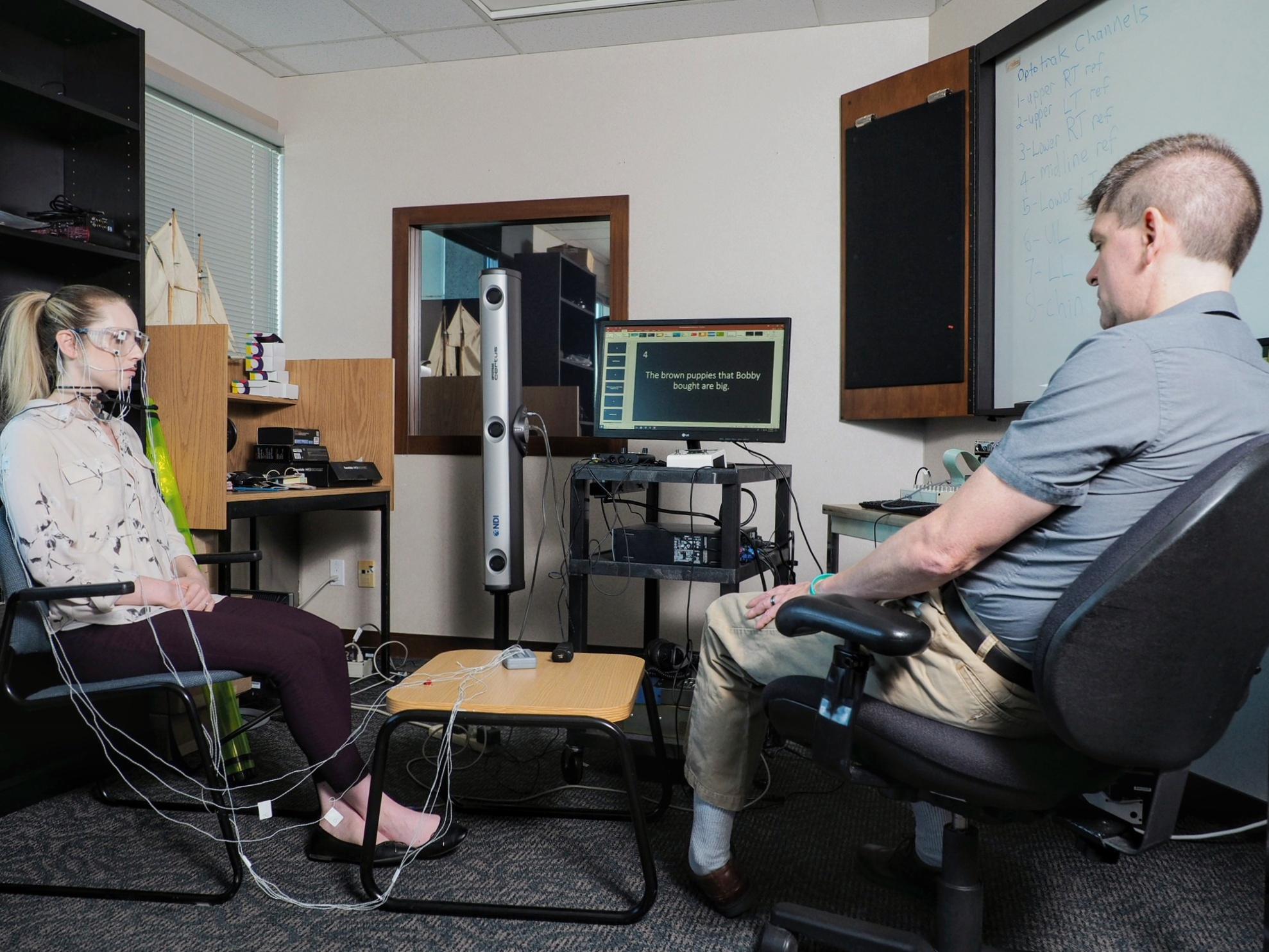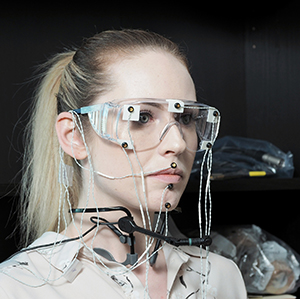
Researcher Torrey Loucks is hoping to see whether or not speech intervention decreases the variability when a person is using their most preferred or natural way of speaking. (Photo: Craig Soars)
A new study from the Institute for Stuttering Treatment and Research (ISTAR) is looking at whether or not stuttering treatment actually changes the way a person speaks by reducing the variability of speech.
While stuttering is defined as a communication challenge that causes the flow of speech to be broken up in repetitions, prolongations, or abnormal stoppages of sounds and syllables, there's still no explanation for why it develops.
As the newly appointed research chair in stuttering for ISTAR, Torrey Loucks, associate professor in the Department of Communication Sciences and Disorders, Faculty of Rehabilitation Medicine is determined to make a breakthrough.
"We know that the opposite of stuttering is fluency. So what makes fluency? What makes speech flow easily?"
There are many factors that play into a person's stuttering-environment and physical make-up being two of the most prominent-but there's still no definitive answer as to why they make a person more prone to developing this speech challenge.
But Loucks wants that to change.
"We're looking at people who stutter as well as people who do not," said Loucks. "We want to know what exactly causes stuttering so we can get closer to finding the best way to manage it and, ultimately, to eliminate it."
The study uses state-of-the-art motion tracking technology based on infrared light emitters that attach to the participant's face. This allows the person's speech movements to be tracked.

Infrared light emitters attached to the face can track
speech movements in stutterers. (Photo: Craig Soars)
Once the participant has been set up, they are given various bilabial-'b' and 'p' sounding-words and sentences to repeat. Some of the sentences and words are familiar to the English language, such as 'buy Bobby a puppy,' while others are just pseudo-words that test novel speech combinations.
"The speech movements are the source of variability. So when you track the movements of speech articulators, such as the upper and lower lip and jaw, you can find these variabilities in the movements themselves. You wouldn't be able to find these just by recording a person's speech," Loucks explained. "By using the bilabial words-some real, some not-we introduce complicated speech patterns that are often seen in a person who stutters. They have a hard time with 'b' and 'p' sounds."
What Loucks is hoping to see is whether or not speech intervention decreases the variability when a person is using their most preferred or natural way of speaking-whether the therapy is changing the speech system itself.
"We know if we teach a person to speak in certain ways, it will reduce stuttering but it may not feel natural for them. There will be times when they use these therapy skills and other times when they switch back to the way they prefer to speak, which feels more normal to them. In this study, we want to know if therapy also benefits their typical or preferred speaking style," explained Loucks. "Therapy is making a change in their speech system but we want to extend the benefit to every speaking interaction."
If you are interested in participating in an ISTAR study, visit bit.ly/ISTARstudies.